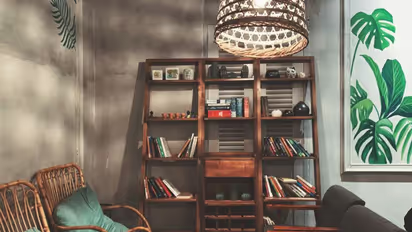Interior design tips: Brutalism is interesting and aesthetic
Brutalist interior design is a great way to bring an era of history into your home. Vandana Gujrati explains

All trends are circular, and what was once seen as old and outdated becomes new and modern again -- in fashion, music, art, and especially architecture. Rough textures, unfinished walls, neutral tones and geometric forms: having emerged in the 1950s, the Brutalist style is one of the best-known design trends of the modern era.
The trend is now experiencing a softer approach that incorporates natural elements like wood, stones, plants, and sustainable materials, resulting in a warmer and more welcoming aesthetic, enjoying an increasingly high profile in the social media world.
Find out here what makes Brutalism so interesting and how it is being used in contemporary interior design.
1) Origin of Brutalism
The name 'brutalism' comes from the French term 'béton brut', which means 'exposed concrete'. One notable pioneer of the style was the Swiss-French architect and designer Le Corbusier. Brutalist buildings and interiors were intended to project a utilitarian image, with famous examples including the now Frick Madison in New York City, the Barbican in London, and the Cathedral of Saint Mary of the Assumption in San Francisco.
At its core, it is a movement about honesty. There’s no ornamentation, no clutter, no flashy upholstery nor busy wallpaper. Nothing is covered up or pretending to be anything it is not.
There is a purity and simplicity to it. The style is gaining importance in the field of interior design as it puts the focus firmly on people and their reality -- just as realism did in art, evoking feelings of strength and eliciting emotional reactions. It is artistically sculptural giving it unique qualities that rely on depth to create patterns and compositions with light and shadows.
2) Statement Furniture, Large windows, rough walls
Brutalism is experiencing a revival in furniture design because the style can be easily combined with other trends such as industrial chic and minimalism. Because of the geometric shapes and clear lines, the style immediately strikes the onlooker as cool, austere and orderly. Warm wood detailing, robust and eye-catching statement furnishings, rough stone surfaces / concrete floor inlaid with stones, unplastered walls, large windows and skylights round off the stark ambience.
3) Less is More
The starkness of the design comes through particularly in the selection of colour and material. The materials used in the brutalist style -- exhibit cool grey tones and neutral colour nuances, lending spaces a stark, almost clinical atmosphere. Warm wooden objects or dark stone surfaces on tables or sideboards can provide pleasant contrasts. Brass accents and various light sources form a counterbalance, providing a little mid-century feel -- and bringing sleek elegance, cosiness and functionality into harmony.
To sum it up, brutalist interior design is a great way to bring an era of history into your home. Its raw materials and angular forms create space for new ideas and innovative and sustainable materials.